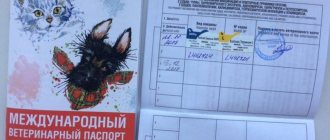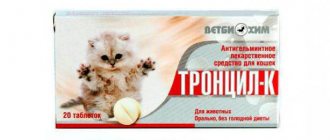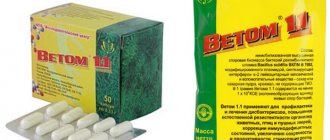A passport for a cat is a document that owners need to travel and move with an animal to a new place of residence outside the territory of the Russian Federation or simply monitor the pet’s health and keep track of whether vaccinations are up to date.
Many countries require this document when traveling abroad. Without a veterinary certificate, a cat is prohibited from entering the territory of the state.
Why do you need a cat passport?
Both purebred animals and ordinary cats will need a veterinary document for the animal. If the animal does not have to travel soon, then you don’t need to get a passport. But many owners prefer to have a kind of “medical book” for their pet, so as not to forget about the vaccination schedule, deworming and other mandatory activities. Vaccine and anthelmintic labels pasted into passports will relieve owners of the need to remember the names of medications.
The form from the veterinarian must contain the necessary information about the owner, pet and include medical indications. It also contains information about breed membership. Owners going abroad need to find out how to get a cat's breed passport and other documents in advance.
International sample
The international option is needed for cats that need to be taken outside the country. The document in the form of a booklet can be purchased at the hospital. It contains special columns with translation into two languages - Russian and foreign (most often English or German).
The international veterinary passport for cats must contain special marks that comply with EU regulation 576/2013. If they are not there, then the pet will not be allowed into European countries.
When a pet enters the territory of the EU countries, you will need an international sample of a cat passport. This type differs from the usual format in its design. When filling out the fields, enter information in Russian, and then translate into English.
Regular passport
When transporting a pet across the territory of the Russian Federation, a veterinary certificate is required with notes on vaccinations (mandatory against rabies), treatments against parasites, as well as a special certificate in form No. 1 (it is not required everywhere, but only at some airports). Form number one is valid for only five days, so it is issued shortly before the trip. In the passport for the cat, all notes about timely rabies injections are made.
To travel by train in Russia, you do not need documents for a cat.
How to fill out an international veterinary passport for a dog
This document is a small book with numbered sheets reserved for specific information.
The sections on the first pages are filled out by the breeder, dog owner or veterinarian. Enter information about the owner (full name, residential address, contact details) and about the dog (name, breed, gender, date of birth, color, special features, identification data). The gender of the animal is marked with a tick rather than written in letters. Next to the gender selection boxes there is a box to tick if the dog is spayed or neutered. Identification information includes a barcode sticker if the pet has a chip implanted, the date of implantation and the area where the chip is placed.
On the first page of the spread, a photograph of the animal is pasted in, preferably in full height (standing side view) and with the veterinarian’s seal. If the puppy is still small, then pasting in the photo should be postponed until the puppy is 1 year old. A hunting breed dog must be photographed full length on the left side.
The international veterinary passport has a page for filling in information about the breeder. The name and surname of the breeder, his full residential address and contact information should be indicated. A separate page is provided for the stamps of the veterinary institution and the doctor’s signature.
The following pages are marked with tables in which notes are made on vaccinations against rabies, plague, hepatitis, leptospirosis, enteritis and other vaccinations. The cells of the tables are filled out by a veterinarian, who enters the date of vaccination, pastes a sticker with information about the vaccine, signs and seals. Without stickers, seals and signatures, as well as vaccination certificates certified by unauthorized bodies, are considered invalid.
Where and how to get a passport for a cat
Official uniforms are purchased in specialized stores or when visiting a doctor. It is issued in the same place where the pet was vaccinated. In nurseries, the necessary certificates are issued by the breeder himself before selling kittens.
What does the document look like?
The appearance of the form may sometimes differ. For example, graphs can be printed horizontally or vertically. The cover also differs - this should not be scary, since the main thing is the information inside.
The same forms are purchased for both cats and dogs, so it is possible to understand who owns the certificate only by its content.
Who issues a veterinary passport?
Veterinary passports for cats are issued by a doctor at an animal clinic. Usually the certificate itself is issued when you visit the doctor for the first vaccination. The main columns are filled in by a veterinarian. It should be noted that all pages in certain places must have the seal of a specialist, and each of the vaccination stickers is stamped with a special seal. All seals must be confirmed by the doctor's signature. If these rules are violated, the certificate is invalid.
Individual columns can be filled in by the owner himself. It is also possible to paste a photo of your pet.
Other documents for purebred cats
If you bought a kitten from a nursery or from a private owner, you must be provided with a complete set of the following papers:
- pedigree (metric);
- already issued veterinary passport with notes on the first vaccinations;
- purchase and sale agreement (not always drawn up);
- documents upon request (for example, championship certificates, parental health certificates, etc.).
It is enough for non-pedigree cats to have one veterinary passport. This is convenient in the sense that you don’t need a bunch of papers, but it’s inconvenient when you have to prove ownership of an animal.
How to do
A veterinary passport can usually be obtained during the cat’s first vaccination at a veterinary clinic, both private and public. In nurseries, the breeder himself is often responsible for preparing such a document. In addition, it can be issued for an already adult animal, if for some reason this has not been done previously. To do this, just visit the clinic with your cat and documents about previous vaccinations and other procedures.
In addition, some institutions offer a service to call a veterinarian at home. This option will be especially relevant for pets who experience severe stress from visiting unfamiliar places or long trips in transport.
Important! A document that does not meet the design requirements may be considered invalid. This concerns the lack of vaccination dates, corresponding stickers and signatures, certification of vaccinations with seals and signatures of unauthorized persons and organizations (kennels, clubs), especially in relation to rabies vaccines.
If you lose your veterinary passport, in most cases it can be restored. To do this, just contact the veterinary clinic where the cat was last vaccinated. All visits must be duplicated in the registration and control log, so finding the history of visits and medical procedures performed on the animal will not be difficult.
In addition, Russian legislation in the field of veterinary medicine obliges clinics that have a permit for veterinary activities to report quarterly on their work to the State Veterinary Supervision Authority, where the reports are stored for 10 years from the date of registration. For microchipped pets, the procedure for restoring a veterinary passport is greatly simplified, since all the necessary information about the animal is encrypted in the chip.
A passport for cats is made along with their first vaccination, right at the veterinary clinic where the vaccination was carried out. The first vaccinations of kittens can be done after 2-3 months from the date of birth of the kitten. The sooner you do this, the less risk your pet will have of getting sick.
Let's return to the technology of creating a passport. In appearance, this is an ordinary small book containing 18 sheets with a strong cover.
The doctor enters all the necessary information. The pages of the passport are stamped by this institution. In the necessary places where data on vaccinations performed is indicated, there must be a personal signature and seal of the doctor who performed the procedure. If anything is missing, the vaccination is considered invalid.
Important! If you are preparing a document only for traveling abroad. The doctor’s signature and seal are valid for 5 days; at the end of the period, you should make fresh entries in the country where you are located.
Often a passport is issued for purebred cats. Again, when buying a purebred kitten, breeders may simply not be burdened with this issue, because they do not always have plans to take it to exhibitions or to different countries.
There are times when documents are lost, sometimes they can be restored, but not in all cases.
The procedure for creating a new identity is simple. You just need to go to the nearest veterinary clinic and they will issue it for you.
In case of loss of documents, an additional chip is made, which can be used to restore all data about the pet, since all the information is recorded on it.
It allows you to take care of the animal, so if your pet gets lost, it can be found. At the same time, the microchipping procedure remains not the easiest and cheapest event.
Other documents
If you want your pet to be able to participate in an exhibition of purebred animal species, then you will need additional documents.
Information from the veterinary certificate is not enough; you need to fill out the following papers:
- Pet genealogy (pedigree);
- Certificate (can be given directly at the exhibition or at the veterinary clinic, can be obtained only before the event).
Attention! A pedigree is not needed, if the pet is not purebred, then it can be a participant in the exhibition under the “domestic” category.
The pedigree can be drawn up based on the metric that is issued at the birth of a kitten. The metric itself contains data about the cat’s parents, its date of birth and breed.
The metric can be issued 6 months after the birth of the animal, for this:
- Contact the club where the mother cat is registered.
- The club will check the pedigree and if everything is in order, then the document passes.
Pedigree registration procedure:
- After receiving the metric, contact the club where the mother cat is registered (if you don’t remember the club, the address of the club where the pet is registered is indicated in the metric)
- The club will activate the kitten;
- If the cat meets all breed standards, the pedigree is certified.
For an adult cat, you can get a certificate of conformity to the breed if it is not known who its mother is, since the club will not be able to issue you a pedigree.
To create it you need:
- Participate in at least 3 exhibitions (the selected cat breed is available);
- Experts must confirm that the pet meets the standards of a specific breed.
- After this, when crossed with another representative of the same breed, the kittens will receive a partial pedigree, and the next generation will have a complete pedigree.
Registration of a certificate
To obtain a certificate, the cat must meet the following points:
- all vaccinations have been completed;
- completely healthy;
- passed all veterinary and sanitary treatments, and all diagnostic tests were carried out;
- have a rabies vaccination;
- no worms;
- conducting research for the presence of lichen - for cats.
At the moment the cost ranges from 500 to 1500 rubles. But, again, everything depends on the institution where you apply.
In this article, we covered the importance of a passport for a cat and how to obtain it.
Let the care development and adaptation video webinars play a good role in your development as a competent breeder. We recommend attending exhibitions and webinars about breeds that you have not yet studied. Let thoughts about dogs and kittens motivate you to great feats. Always remember that your pets are waiting for you!
What is indicated in the veterinary passport
The veterinary passport for the cat contains all medical data, as well as information about the owners. Pets with a pedigree, but without a veterinary passport, will not be able to take part in exhibitions; they will not be able to be transported in transport with other people or taken abroad. If the cat is not purebred, then a passport will not hurt either. There the doctor will mark the scheduled vaccination. This will help you stay on schedule and not miss your next injection. The records make it possible to understand in emergency cases whether medications for intestinal parasites were given, whether the cat was vaccinated for rabies, etc.
Owner details
The fields in a veterinary passport for a cat contain not only information about the pet, its name and vaccinations. It should contain basic information about the owner of the animal: full name, patronymic and surname. The residential address indicated in the certificate must be recorded as actual and not as registered. For emergency communications, it is important to indicate the telephone number in the appropriate column. Other personal data is not mentioned or attributed at will.
Information about the breed and name of the animal
The description of the pet on the very first page begins with the nickname. The name of the cat is recorded on the certificate in the same way as it is indicated in the pedigree itself. This applies to purebred individuals. If the mustache is not the owner of the metric, then the name is recorded at the request of the owner. Then the birthday is indicated. If the owner does not know the date and month, then an approximate value is indicated.
In modern papers, after indicating the gender of the pet, there is a column about castration. It only needs to be filled out if the pet is sterilized. The exact information from the pedigree is transferred to the column about breed affiliation. For ordinary individuals, “Metis” is indicated there. The color can be marked simply with a word or a code. The pet's color is written using the usual adjectives: for example, black, white, tricolor.
In the coat column there are 4 types of marks: hairless, longhaired, shorthaired or semi-longhaired. Special signs include visible results of injuries: scars, amputated body parts. If the color of an individual has features that are not characteristic of the representatives, then this is also recorded in the “Special Features” column. For example, extra spots or streaks are mentioned.
Information about chipping
Export of a domestic cat to European and American countries is possible only after the microchipping procedure. A note about this is made in the international certificate in the appropriate line. In addition to the number of the chip itself, indicate the date of installation with the signature of the veterinarian and with the official seal of the clinic. A sticker with a barcode is pasted into the form.
The ID itself and the pet's pedigree cannot contradict the information indicated on the microchip itself. The date of birth, gender, breed, color, as well as the owner’s personal data and telephone number are recorded there.
Veterinarian's notes
In the vaccination passport for cats, the veterinarian notes information about the vaccinations performed. Next to all items about injections, write the name of the drug, serial number, date, and put a signature and stamp of the medical institution. Similar information is entered in the columns about the patient’s deworming and treatment for other parasites. Additional points that the doctor notes are:
- Information about surgical operations. Indicate the date and type of transactions.
- Information on reproduction: time of mating, estrus, number of kittens during lambing, date of birth.
- Information about the veterinary clinic where registration was carried out.
If the passport does not have any required column, the information is entered in the “Other notes” section.
Kitten veterinary passport
If the cat is purebred, but there are no documents for it, this can arise for a number of reasons.
Sometimes, when buying a kitten, people forget about the documents: after all, an animal is needed for the soul. And after a while, a problem arises with how to get documents for a cat, which will be extremely difficult to solve. It also happens that documents are lost. In addition to a passport, a cat can also have a pedigree; this document is needed to participate in exhibitions. True, if the cat is not purebred, a pedigree is not needed. It happens that a kitten is bought without a pedigree. In this case, you can arrange it yourself. How to make a pedigree for a cat is described below.
If there is a metric, drawing up a pedigree will not be difficult. The metric is the kitten's birth certificate. You should contact the club that issued this document. The entire procedure will take about three weeks. The cost can vary from 500 to 1500 rubles.
If the club that issued the pedigree to the kitten’s parents is located in another country or in another city, you can ask to send copies of these documents by mail. And with the received copies and metrics, go to the club that issued the metrics.
Let's look at how to make a pedigree for a cat without documents, that is, without a birth certificate. If it was known for sure that the kitten’s parents had pedigrees, you need to contact the seller and agree to receive the metrics. And then proceed according to the already known algorithm.
If the breeder refuses to issue a metric, you can complain about him to the club. Although such refusals often have a good reason: a year has passed since the cat was born, the kitten is not intended for breeding. In the second case, you can draw up a pedigree, but the club will issue a document either with the “PET” stamp or without a number. True, such a pedigree will not have practical significance.
So, when buying a purebred cat, you should draw up documents for it just in case. Today there are no plans to take part in exhibitions, but after a certain time the decision may change.
The veterinary passport indicates the name, gender, breed of the cat, its date of birth, the name of the owner or breeder. But the most important thing is that the passport must contain vaccination records with a special sticker, a veterinary clinic stamp and a doctor’s signature.
Veterinary passports come in different designs. The standard passport is blue with blue security inscriptions “pet”, but if they give you a passport of a different type, it’s okay. Different regions have different requirements, if anything happens, your veterinarian will make you a new correct passport and offer to keep the old one, just in case.
It is important to understand that every purebred kitten must have a veterinary passport, but it does not in any way confirm its breed, since it is filled out by a veterinarian or breeder, and clubs and exhibition systems are authorized to guarantee the breed.
This is the kitten’s birth certificate, which is issued when it is activated in the club system. The metric indicates the kitten's name, its breed, gender, color, date of birth; names and colors of the kitten's parents; name of the breeder, etc. The document must have the emblem of the system to which the kitten belongs.
Also, the metric of the European system must bear the seal of the club that issued it, and the signature of the responsible club functionary who activated the kittens, so that in the future it can be exchanged for a pedigree.
In American systems, based on the metric (slip), a kitten is registered and a pedigree is ordered at the central office.
A European breeder may refuse to give kittens for castration, but he is obliged to at least show it to you. And it’s better to ask her to give her back, the club still knows that the kitten is for castration and will not give you the pedigree just like that.
In American systems, such problems do not arise, since all breeding restrictions are indicated when registering a litter.
The pedigree indicates several generations (3-5) of your kitten’s ancestors (their nicknames, colors and pedigree numbers). The pedigree must contain the emblem of the association (system), the name of the club, nursery, the name of the breeder and the name of the owner of the kitten, information about the kitten itself.
Be careful: in the pedigree, in the “owner” column, your name must be indicated, not the name of the breeder! To do this, you need to either obtain a pedigree yourself, or agree in advance with the breeder on its registration.
In the European system, the pedigree must have a number, the seal of the club and the signature of its leader. In American ones, only the number is indicated, since the pedigree is issued by the system.
If the kitten is to be castrated, then in the European system they may give you a pedigree without a number or with a “pet” stamp, or not issue it at all, but again it would be better to negotiate so that they give it.
If you yourself draw up a pedigree based on metrics in a club specified by the breeder, then you must request it before the kitten turns one year old. This applies only to European systems; in American systems, the owner can request a pedigree based on the breeder slip at any time if the cat has been registered in the system.
However, you will not need a pedigree if you do not engage in breeding.
An agreement for the purchase and sale of a kitten is no different from an agreement for the purchase and sale of other property (according to the law, a cat is property). The full names and passport details of the parties must be indicated there; name, breed and gender of the kitten; kitten price; special conditions.
The contract must be read carefully before signing.
Sample contract
READ Bruised back paw in a cat symptoms. Sprained ligaments in a cat: learning to identify and treat
How much does it cost to prepare a document?
After the first scheduled vaccination, a veterinary passport for the cat is officially issued. The doctor independently fills out the certificate, the form of which costs from 50 to 300 rubles. Often the cost of the booklet form is already included in the cost of vaccination.
In nurseries, the breeder independently issues a veterinary passport, since the kitten must be vaccinated before being transferred to the new owner. The owner of the animal can also purchase a blank form and make notes about the gender, breed, age, name of the animal, as well as enter personal data.
A cat passport is a medical multifunctional ID that contains important information about the pet: breed, name, age, owner details, information about the presence of a chip. In addition, the doctor enters information about surgical operations, matings and childbirth. All this is needed for traveling abroad and within the country, for breeding and participation in exhibitions. But even if the cat is sterilized and does not have a breed, the passport will be useful - it will serve as a record book for vaccinations and other planned medical events.
The article is for informational purposes only. Contact your veterinarian!
Certificate of registration of the cat in the system
In American exhibition systems, the main document for a cat is a registration form, which indicates the registration number of the animal. This document certifies the cat’s membership in the relevant system, and, consequently, the right to receive titles and pedigrees for it at the central office of the organization, and to register the litters received from it.
READ DIY geese feeders
In addition to the number, the form indicates the name of the cat, its breed, color, its parents, date of birth, name of the owner and breeder of the animal; the logo of the system and the signature of its secretary (facsimile).
In fact, the registration certificate is also the system's legal proof of cat ownership. Therefore, usually, such a certificate is issued to the new owners of the cat, after purchasing it from the breeder, based on the received metrics. If the breeder registered the cat before the sale, then he is required to issue another document - a transfer.
How to fill out an international veterinary passport for dogs
It is not difficult to fill out an international veterinary passport for dogs yourself; to do this, you need to carefully and legibly enter the required information in the appropriate columns of the document. Sections that indicate veterinary treatments (deworming, vaccination, etc.) are filled out in a veterinary clinic and certified by the signature and seal of a specialist.
Why do you need a veterinary passport for a dog?
The owner needs a veterinary passport for a dog in the following situations:
- For hassle-free travel in any public transport - taxis, buses, trains, planes, etc.
- In cases where it is necessary to prove ownership of a pet.
- When crossing the external borders of the country (leaving for permanent residence, on vacation, on a business trip, to an exhibition, etc.).
- Participation in various exhibition events associated with the presence of other animals.
- In order to track antiparasitic treatments and vaccination schedule.
- Participation in the work of breeding and improving breed qualities.
Example of a completed passport
According to current legislation, the owner of an animal is not required to present a veterinary passport when traveling with a pet within the country . However, experienced dog breeders recommend taking this document with you on a trip to avoid unpleasant situations.
How to get a passport for a dog
The owner can obtain a passport for a dog by contacting a veterinary clinic. This issue is often dealt with by the breeder from whom the puppy is purchased. At the age of 2-2.5 months, a note is placed in the document about deworming and the first vaccination of the pet. You can purchase dog metrics not only at a specialized institution, but also at a pet store.
And here is more information about the rules for transporting a dog in a car.
What does a dog's passport, international vaccination certificate look like?
A dog's passport looks like a small book in which the pages are divided into columns and lines. In the international document, names in Russian are duplicated in English. On the first page of the metric there is a place for pasting a photograph of the pet and lines in which data about the owner is entered - last name, first name, patronymic, place of residence, contact information. The international document contains a column that reflects information about the breeder.
As for data about the animal, the veterinary passport must indicate the name, date of birth, and breed. The document contains lines that include the animal’s gender, information about castration, color, and special features. After the dog turns 1 year old, a photograph is pasted into the document.
Separate columns in the metric contain data that allows you to identify a pet - brand, pedigree number, information about the microchip. As for information about microchipping, this section includes information about the date of the procedure and its location. A barcode is attached to the page, which confirms the fact of microchipping and completely replicates the data of the microchip implanted in the pet’s body.
The International Vaccination Certificate contains information regarding veterinary treatments performed. The document indicates the dates and drugs used for deworming before vaccination. On specially designated pages, information about the routine vaccination is entered - the date of vaccination, the name, series and number of the vaccine, the signature of a veterinary specialist and the seal of the institution where the procedure was carried out.
Watch this video on how to fill out an international passport for a dog:
Gender of the dog in the passport: how to indicate
To indicate the gender of the dog in the passport, you must select a Latin designation: the male gender (male) is designated in veterinary metrics by the letter M (male), and the female gender (bitch) by the letter F (female). As a rule, in the document, the gender is marked with a tick in the box opposite the letter M or F. In addition to the gender, information about the castration (sterilization) of the animal is also entered.
Information about the pet’s gender, like other data, is entered into the document in legible handwriting and block letters.
Is data on deworming treatment included in the puppy passport?
The puppy passport, which is filled out by the breeder, contains information about deworming. Such data is necessary for a veterinarian to plan the first vaccinations and create a schedule for subsequent treatments. Information about the date of the antiparasitic procedure and the name of the drug is entered in the appropriate columns.
How long is a dog passport valid?
A dog passport is issued for an animal once and is valid for the entire life of the pet. An international document has no expiration date and, if lost, is subject to mandatory restoration.
Where to get a dog passport
You can get a dog passport at a pet store, a specialized clinic, or from a breeder. However, without the appropriate marks, signatures and seals, the metric will not be valid.
How much does it cost to get a passport for a dog?
Making a dog passport is inexpensive - the book itself with the necessary pages costs from 50 to 150 rubles, depending on the quality of the cover and design. Notes on deworming and vaccination are provided by a veterinarian free of charge.











